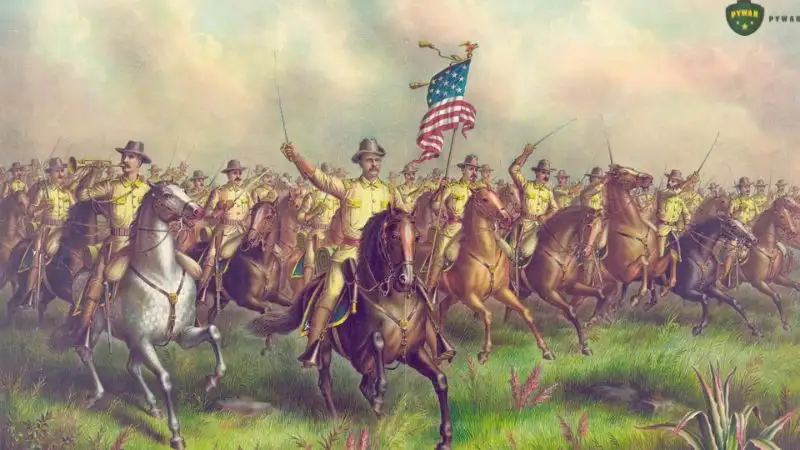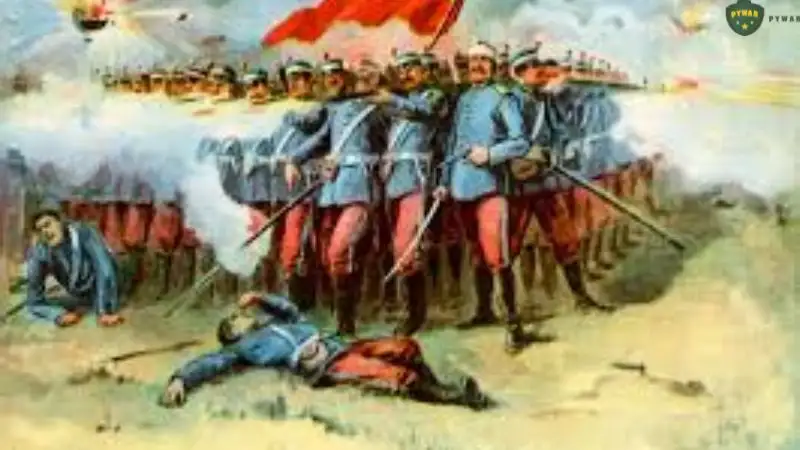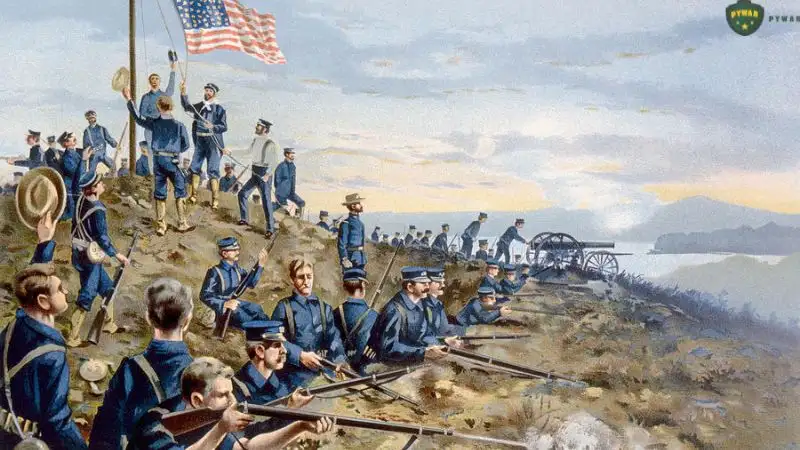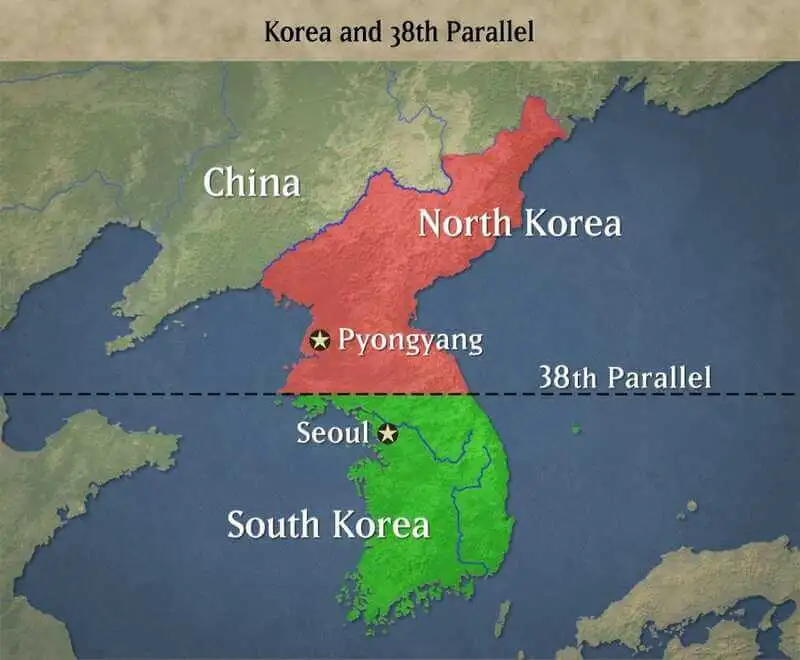The Spanish-American War of 1898 marked a pivotal moment in American history, transforming the United States into a global power and reshaping the geopolitical landscape of the Caribbean and Pacific. This conflict, driven by a mix of humanitarian concerns, imperial ambitions, and media sensationalism, culminated in decisive American victories and the decline of Spanish colonial influence. This article explores the timeline, key locations, causes, major battles, casualties, and outcome of the war, providing a comprehensive overview for history enthusiasts and researchers.
Time and Date of the War
The Spanish-American War officially began on April 25, 1898, when the United States declared war on Spain following the sinking of the USS Maine and growing public pressure to intervene in Cuba. Hostilities lasted until August 12, 1898, when a preliminary peace agreement was signed, with the formal Treaty of Paris signed on December 10, 1898. The war spanned roughly four months, with major military engagements occurring primarily in June and July 1898, including the Battle of San Juan Heights (which encompassed Kettle Hill) on July 1, 1898, and the Battle of Manila Bay on May 1, 1898.

Location of the War
The Spanish-American War was fought across two primary theaters: Cuba in the Caribbean and the Philippines in the Pacific. In Cuba, key battles took place around Santiago de Cuba, including the San Juan Heights (comprising Kettle Hill and San Juan Hill), located on the southern coast of the island. Naval engagements occurred in Santiago Harbor and off the Cuban coast. In the Philippines, the most significant action was the Battle of Manila Bay, fought in the waters near Manila, with subsequent land operations in and around the city. Additional minor engagements took place in Puerto Rico and Guam, Spanish territories also targeted by American forces. These geographically diverse locations underscored the war’s global scope and the U.S.’s emerging naval power.
Causes of the Conflict
The Spanish-American War was sparked by a combination of ideological, economic, and geopolitical factors, amplified by domestic pressures in the United States. The primary causes included:
- Cuban War of Independence (1895–1898): Cuba, a Spanish colony, was embroiled in a rebellion against Spanish rule led by figures like José Martí. Spain’s harsh counterinsurgency tactics, including the “reconcentración” policy under General Valeriano Weyler, forcibly relocated Cuban civilians into camps, leading to widespread starvation and death (estimated at 100,000–200,000 civilian deaths). Reports of these atrocities, sensationalized by American newspapers like those owned by William Randolph Hearst and Joseph Pulitzer, fueled public outrage and sympathy for Cuban independence.
- Sinking of the USS Maine: On February 15, 1898, the USS Maine exploded in Havana Harbor, killing 266 American sailors. While the cause remains uncertain (likely an internal explosion), American media and politicians blamed Spain, rallying public support with the slogan “Remember the Maine! To hell with Spain!” This event became a catalyst for war.
- American Imperial Ambitions: The late 19th century saw the U.S. seeking to expand its influence, driven by the ideology of Manifest Destiny and a desire for overseas territories to secure trade routes and naval bases. Spain’s weakening empire, with colonies like Cuba, the Philippines, and Puerto Rico, presented an opportunity for American expansion.
- Economic Interests: American businesses had significant investments in Cuba, particularly in sugar plantations. Instability threatened these interests, prompting calls for intervention to protect economic assets and open new markets in Asia via the Philippines.
- Yellow Journalism: Sensationalist reporting exaggerated Spanish atrocities and framed the conflict as a moral crusade, pressuring President William McKinley to act despite his initial reluctance. The media’s influence shaped public opinion, making war politically inevitable.

These factors converged to push the U.S. into war, with Congress passing a resolution on April 20, 1898, demanding Spanish withdrawal from Cuba and authorizing military force.
Course of the War
The Spanish-American War was characterized by swift and decisive American military campaigns, leveraging superior naval power and a volunteer-driven army. The conflict unfolded in two main theaters, with key battles shaping its outcome.
Prelude to War
Following the USS Maine explosion, the U.S. implemented a naval blockade of Cuba in April 1898, cutting off Spanish supply lines. President McKinley called for 125,000 volunteers, including the famous 1st U.S. Volunteer Cavalry (Rough Riders), led by Theodore Roosevelt. The U.S. Army, under General William Rufus Shafter, prepared to invade Cuba, while the Asiatic Squadron, commanded by Commodore George Dewey, targeted the Philippines.
Battle of Manila Bay (May 1, 1898)
The war’s first major engagement occurred in the Philippines. On May 1, Dewey’s squadron entered Manila Bay and decisively defeated the Spanish Pacific fleet under Admiral Patricio Montojo. Dewey’s flagship, the USS Olympia, led a flotilla that sank or captured seven Spanish ships with minimal American losses (one sailor died of heatstroke). The victory crippled Spanish naval power in the Pacific and secured Manila Bay, paving the way for a U.S. occupation of the Philippines.
Cuban Campaign
In Cuba, the U.S. Fifth Corps, numbering around 17,000 men, landed at Daiquirí and Siboney in late June 1898, facing logistical challenges and tropical diseases like yellow fever. The campaign focused on capturing Santiago de Cuba, a key Spanish stronghold and home to a Spanish fleet under Admiral Pascual Cervera.
- Battle of Las Guasimas (June 24, 1898): The first land engagement saw the Rough Riders and regular troops, including the 9th and 10th Cavalry (Buffalo Soldiers), clash with Spanish forces in a skirmish, securing a foothold but suffering 16 dead and 52 wounded.
- Battle of El Caney and San Juan Heights (July 1, 1898): The pivotal land battles occurred on July 1. General Shafter’s plan involved capturing El Caney, a fortified village, and the San Juan Heights, including Kettle Hill and San Juan Hill, to encircle Santiago. The attack on El Caney, led by Brigadier General Henry W. Lawton, faced fierce resistance, delaying reinforcements. Meanwhile, the 1st Infantry Division under Brigadier General Jacob Kent and the Dismounted Cavalry Division under Brigadier General Samuel Sumner assaulted the heights.
The assault on Kettle Hill, led by Theodore Roosevelt and the Rough Riders, supported by Buffalo Soldiers, overcame Spanish defenses bolstered by Mauser rifles. Lieutenant John H. Parker’s Gatling Gun Detachment provided critical support, firing 18,000 rounds to suppress Spanish positions. By mid-afternoon, American forces captured Kettle Hill, enabling support for the simultaneous assault on San Juan Hill, which was secured by evening despite heavy casualties. The victories gave the U.S. control of the heights overlooking Santiago. - Naval Battle of Santiago de Cuba (July 3, 1898): With Santiago under siege, Admiral Cervera’s fleet attempted to break the U.S. blockade. The U.S. North Atlantic Squadron, under Commodore William T. Sampson and Rear Admiral Winfield Scott Schley, annihilated the Spanish fleet, sinking all six ships with only one American sailor killed. This victory sealed Spain’s defeat in Cuba.
Other Theaters
In Puerto Rico, U.S. forces under General Nelson A. Miles landed in late July, facing minimal resistance and capturing the island by August. In Guam, the Spanish garrison surrendered without a fight on June 20, 1898, to U.S. naval forces.
End of Hostilities
By early August, Spain’s military position was untenable. On August 12, 1898, a preliminary peace agreement halted fighting. The Treaty of Paris, signed on December 10, 1898, formalized Spain’s surrender, ceding Cuba, the Philippines, Puerto Rico, and Guam to the U.S.
Casualties
The Spanish-American War was relatively brief but costly, particularly due to disease. American forces suffered approximately 2,446 deaths, but only 385 were from combat. The majority—over 2,000—died from diseases like yellow fever and malaria, compounded by poor sanitation and logistics. Combat casualties included 205 killed in the San Juan Heights battles (including Kettle Hill) and minimal losses in naval engagements like Manila Bay. An estimated 5,000 Americans were wounded.
Spanish casualties were higher, with approximately 2,000 combat deaths and 15,000 deaths from disease. In Cuba, the Spanish lost 215 killed in the San Juan Heights battles alone, with a total of 860 killed and 3,700 wounded across the campaign. In the Philippines, hundreds of Spanish sailors and soldiers perished, particularly in Manila Bay. Cuban insurgents, allied with the U.S., suffered an estimated 5,000–10,000 deaths over the broader independence struggle.
Who Won the Spanish-American War?
The United States decisively won the Spanish-American War. The rapid and overwhelming victories in Manila Bay, Santiago, and Puerto Rico demonstrated American naval and military superiority, forcing Spain to capitulate within four months. The Treaty of Paris granted the U.S. control over Cuba (nominally independent but under U.S. influence), the Philippines, Puerto Rico, and Guam, marking the emergence of the U.S. as a colonial power. Spain’s defeat ended its centuries-long colonial dominance, while the war elevated figures like Theodore Roosevelt, whose leadership at Kettle Hill bolstered his political career.

Conclusion
The Spanish-American War of 1898 was a transformative conflict that reshaped the United States’ role on the global stage. Driven by humanitarian outrage, economic interests, and imperial ambitions, the war saw swift American victories in Cuba and the Philippines, secured through key battles like Manila Bay and San Juan Heights. Despite heavy losses from disease, the U.S. emerged as the clear victor, gaining new territories and asserting its power. The war’s legacy, including the rise of American imperialism and the contributions of diverse units like the Rough Riders and Buffalo Soldiers, continues to resonate in historical discussions. For students, researchers, and history buffs, the Spanish-American War remains a compelling study of ambition, conflict, and consequence.




